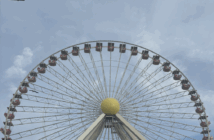By Josie Osborne, Campus News Editor
December, the month known for its cold winters and short days, is a month much anticipated. This can be due to a variety of things, like the end of the fall semester, a glorious winter break from school, and the end of a year that many are eager to put behind them. But perhaps the biggest reason of all is, of course, Christmas.
How Christmas started, though, is another question entirely. The holiday can be traced back to different origins, branching from the pagan celebration of the winter solstice to the birth of Jesus. However, the Christmas we know today, full of garland-strung evergreens and picturesque decorations, can be traced back all the way to the 19th century.

Dr. Kathryn Duncan, Professor of English here at Saint Leo, teaches HON260: Ideas & Expression: Christmas.
“It was very carnivalesque during the Puritan period,” recalled Dr. Duncan, discussing what she knows about the history of Christmas, supplemented by the book The Battle for Christmas by Stephen Nissenbaum.
As a response, she explains, Christmas started to be turned into a holiday for the children. This is when, in 19th century America, the exchange of gifts, the writing of Christmas books, and the popularization of Santa Claus begun.

In Nissenbaum’s book, Duncan says, he discusses the origin of the Christmas tree. While many believe that the Christmas tree tradition was a part of German culture, he argues that this is not the case. Instead, it started from fiction, namely Samuel T. Coleridge’s story “The Christmas Tree.”
“The Christmas tree was described as a prevalent tradition, so it became a prevalent tradition,” says Duncan.
It was during Queen Victoria and Prince Albert’s era that Christmas trees started popping up in every home; they became vessels for decoration and materialism.
Dr. Duncan shared her own Christmas tree traditions, explaining the evolution of her own Christmas decorating.
In July of 2020 during the height of the pandemic and quarantine, Dr. Duncan recalls her desire for joy. In an attempt to lighten her spirits, she brought out her tree early.
“It lifts my heart,” Dr. Duncan says.
This year, she has three trees. While she does use artificial trees (an invention that has progressed greatly since it’s dyed goose feather origins), she makes sure to always have at least one real, living fir.
While much has changed since the days of Victorian Christmas trees, which were decorated with classic ornaments and real wax candles, it is undoubtable that Christmas trees are here to stay and will continue to bring joy and cheer during the winter season.





